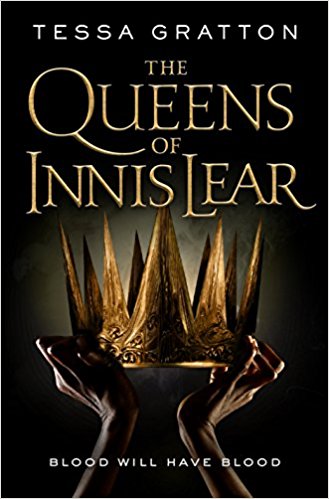 The Queens of Innis Lear by Tessa Gratton
The Queens of Innis Lear by Tessa Gratton Format: eARC
Source: supplied by publisher via Edelweiss
Formats available: hardcover, paperback, ebook, audiobook
Genres: epic fantasy
Pages: 576
Published by Tor Books on March 27, 2018
Purchasing Info: Author's Website, Publisher's Website, Amazon, Barnes & Noble, Kobo, Bookshop.org
Goodreads
A kingdom at risk, a crown divided, a family drenched in blood.
The erratic decisions of a prophecy-obsessed king have drained Innis Lear of its wild magic, leaving behind a trail of barren crops and despondent subjects. Enemy nations circle the once-bountiful isle, sensing its growing vulnerability, hungry to control the ideal port for all trade routes.
The king's three daughters—battle-hungry Gaela, master manipulator Reagan, and restrained, starblessed Elia—know the realm's only chance of resurrection is to crown a new sovereign, proving a strong hand can resurrect magic and defend itself. But their father will not choose an heir until the longest night of the year, when prophecies align and a poison ritual can be enacted.
Refusing to leave their future in the hands of blind faith, the daughters of Innis Lear prepare for war—but regardless of who wins the crown, the shores of Innis will weep the blood of a house divided.
My Review:
The Queens of Innis Lear is a fantasy retelling of Shakespeare’s play, King Lear. It’s important to remember that the full title of the play is The Tragedy of King Lear. And while the author of Queens makes plenty of adjustments in order to make her source material into an epic fantasy, one thing does not change – the story, in the end, is still a tragedy. Maybe, just maybe, not quite as dark as the original version, but do not go into this one expecting a triumphant, happy ending, because it isn’t there.
And it wouldn’t be right or proper if it were. It feels like it ends the way that it is meant to. But happy is not any part of that. It ends as it must, not as the reader, or any of the participants, wish that it would.
Gaelan Lear is the king of the island of Innis Lear, and just like in the play, he’s more than a little bit mad. The reasons for that madness, however, are rooted in the magic that underpins the island of Innis Lear and everything that happens upon it.
The island’s founding and foundational magic seems to have several branches, represented by the worms of the earth, the winds and the rootwaters, and finally the stars of the heavens. Another way of looking at it would be death, life and prophecy. There are multiple possible interpretations.
But Lear is a star priest, and he has decreed that only the prophecies of the stars will hold any sway over his kingdom, and that all reverence and obeisance to the other branches of magic are forbidden. Over the following decade, the kingdom has become as unbalanced as its king.
Lear has three daughters, Gaela, Regan and Elia. Gaela is a warrior queen, Regan a witch queen and Elia a remote star priestess. They also are out of balance, but they are young and still capable of change. With their father in decline, it is on their shoulders that the fate of the kingdom rests. And it rests uneasily.
Escape Rating A+: I absolutely loved this one. I got sucked in from the very first words. The prologue to this book is marvelous, mysterious and pulls the reader in. If epic fantasy is your jam, you’ll lick this one up with a spoon.
That being said, this is a sprawling epic of a story. A lot of what pushes and pulls it towards what becomes its inevitable conclusion are the internal motivations of all the characters. It is a slowly building story, where there isn’t a lot of action at points, but there is a lot of thought and memory and flashback.
So if you are looking for epic fantasy with big battle scenes and obvious good triumphing over obvious evil, this probably isn’t your book. All of the characters in this story operate very much in shades of gray. That is part of what makes them so fascinating, because you can see where things might have gone differently, and more happily, if people had made just slightly different choices.
This is also a story where, in spite of the king’s emphasis on star prophecies above all else, the quote from another Shakespeare play, Julius Caesar, is apropos. As Caesar says, “The fault, dear Brutus, is not in our stars, but in ourselves.” In Queens, so much is blamed on star prophecy, and on the king’s exclusion of all other magic. But for the characters, it is not the prophecies, but their reactions to them, that drive their actions. The faults that doom so many of them are very definitely their own.
It has been said that this is a feminist interpretation of the play, because the emphasis in the story is not on Lear, but on his daughters and their reactions to him. In this version, Lear represents a past that is fading away, but is also the foundations of the sisters’ actions in the present. It is the conflict between the sisters, and between the two elder sisters’ husbands, that pushes the narrative. This is certainly a story where it is the women’s perspectives that carry the most weight, while the men, with very few exceptions, are mostly supporting characters. And when they try to become principals, it is to their cost. Whether that makes this a feminist interpretation or not, it certainly makes for a fascinating one.
In the end, this feels like the youngest sister Elia’s coming of age story. In the wake of their mother’s death, she chose to cling to her father and to follow the path he wanted her to follow, that of the remote star priest. The path that he had intended to take before the crown was thrust upon him. But in the turmoil surrounding the succession, she is forced to finally make her own choices, and to ultimately realize that duty triumphs desire.
Two final comments before I close. For those who have read Jeffe Kennedy’s Twelve Kingdoms series, The Queens of Innis Lear feels like a “Mirror Universe” version of that wonderful epic. I mean “Mirror Universe” in the Star Trek sense, where the characters are all the same, but have been reflected back as their own twisted twins. The Twelve Kingdoms beginning with The Mark of the Tala, is also the story of three sisters, who are also the daughters of a mad king. But because they made different choices in reaction to the same event, the early death of their mother, they emerge stronger and united, instead of weak and divided, and are able to wrest a happy ending from the same circumstances that drove The Queens of Innis Lear to their own near-complete destruction – along with that of the kingdom they fought both over and for.
And finally, more than anything else, The Queens of Innis Lear reminds me of Guy Gavriel Kay’s awesome work of epic fantasy, Tigana. I found Tigana to be both triumphant and tragic, but as much as I loved it, and have kept multiple copies of it, I have never been able to read it again. The ending was perfect and harrowing at the same time.
The Queens of Innis Lear is strikingly similar. The setting, just as in most of Kay’s work, is a slightly altered version of our own history, with magic a part of the weaving of the world and the tale. Innis Lear is a version of England, and all the other countries mentioned have recognizable analogs to our own history.
But the most striking similarity is in the ending. Both stories end in ways that are ultimately necessary. They can’t be anything else. The way the story is woven, the way the characters have acted, have led to only one proper conclusion, and it not a happy one. But it is the one that has to be. And it is heartbreaking for the characters, and for the reader as well.


 Current Giveaways:
Current Giveaways: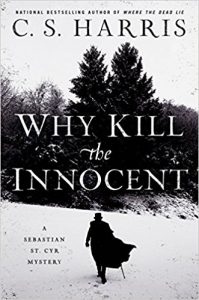 Blog Recap:
Blog Recap: Coming Next Week:
Coming Next Week:










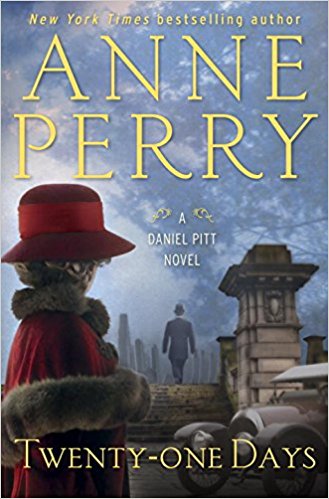 Twenty-One Days (Daniel Pitt, #1) by
Twenty-One Days (Daniel Pitt, #1) by 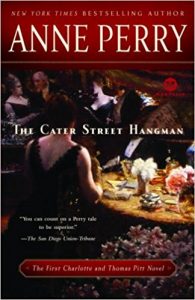 But unlike Murdoch, or its own predecessor series featuring Daniel Pitt’s detecting parents,
But unlike Murdoch, or its own predecessor series featuring Daniel Pitt’s detecting parents,  A Scandalous Deal (The Four Hundred, #2) by
A Scandalous Deal (The Four Hundred, #2) by  It’s much easier to sell Phillip Mansfield on her architectural talents than it is to pretend that what happened on board ship can never happen again. And as much as she eventually succeeds at the first, she completely fails at the second.
It’s much easier to sell Phillip Mansfield on her architectural talents than it is to pretend that what happened on board ship can never happen again. And as much as she eventually succeeds at the first, she completely fails at the second. But the difficulties that Eva faces feel very real. No one believes she can possibly be an architect, not even once the truth is revealed and it becomes obvious that she IS an architect. She is also very career minded, and is unwilling to marry because marriage in the 1890s (and considerably thereafter) subsumed the woman’s identity under her husband’s. She needed her work to be HER work, and to receive commissions based on her efforts and not who her husband might be – and she didn’t want to put anyone in a position where they could force her to stop.
But the difficulties that Eva faces feel very real. No one believes she can possibly be an architect, not even once the truth is revealed and it becomes obvious that she IS an architect. She is also very career minded, and is unwilling to marry because marriage in the 1890s (and considerably thereafter) subsumed the woman’s identity under her husband’s. She needed her work to be HER work, and to receive commissions based on her efforts and not who her husband might be – and she didn’t want to put anyone in a position where they could force her to stop.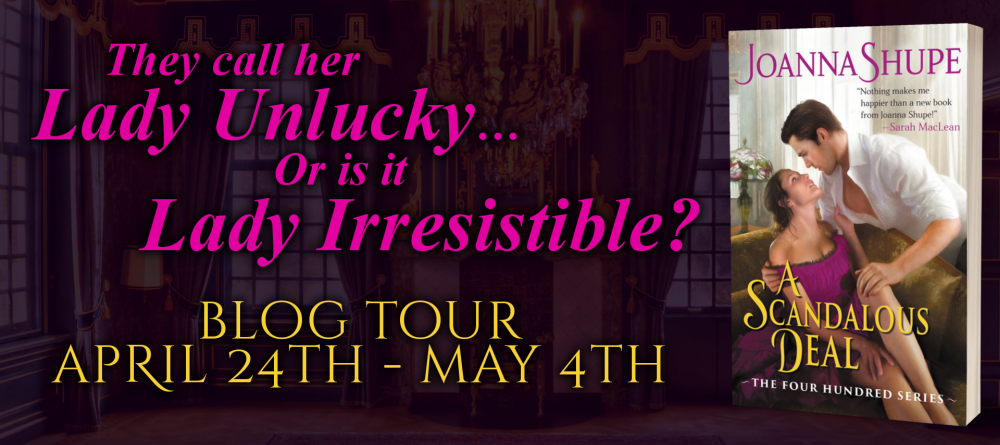

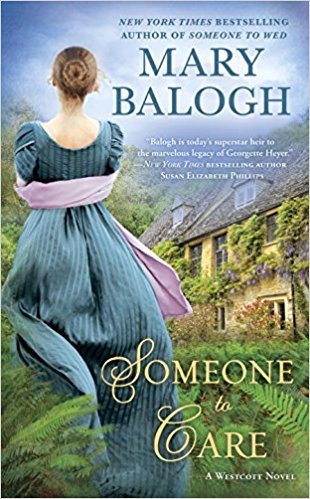 Someone to Care (Westcott, #4) by
Someone to Care (Westcott, #4) by  The previous books in this series,
The previous books in this series,  Total Bravery by
Total Bravery by  Although I read the previous book in this series,
Although I read the previous book in this series, 
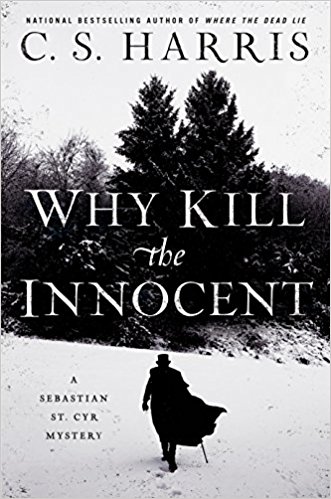 Why Kill the Innocent (Sebastian St. Cyr, #13) by
Why Kill the Innocent (Sebastian St. Cyr, #13) by 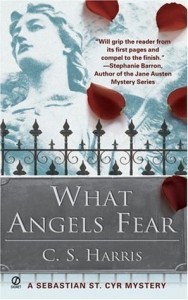 Every book in the
Every book in the  Current Giveaways:
Current Giveaways: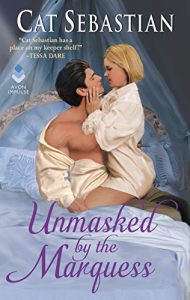 Blog Recap:
Blog Recap: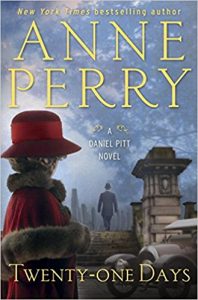 Coming Next Week:
Coming Next Week:
































